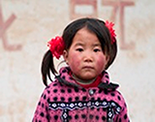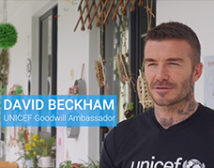China has made significant progress in extending social assistance to poor households. This is of major importance for the well-being of children in poverty. Evidence suggests that social protection, including social transfers, have proven to be the most effective way to attack child poverty, improving child nutrition, education, and healthcare utilization within households.

Children are disproportionately represented among the income-poor. Children's experiences of poverty and vulnerability are multidimensional, and differ from those of adults. Children undergo complex physical, psychological and intellectual development as they grow, and are also often more vulnerable to malnutrition, disease, abuse and exploitation than adults. Children's poverty and vulnerability can also have cumulative and long-term consequences for their future and that of their children.
Children are usually dependent on adults to support and protect them; therefore the loss or breakdown of the family support system is a significant risk, particularly in the context of chronic illness, single parenthood, loss of parents and other crises. Intra-household discrimination, where resources are not shared evenly between, for example, boys and girls or adopted or step-children, can also result in child poverty and hunger, lack of access to services, and abuse and exploitation.
Even though many social protection programmes already benefit children without explicitly targeting them, small nuances in how children are considered in the design, implementation and evaluation of social protection programmes can make a huge difference. Making social protection more child-sensitive has the potential to benefit not only for children, but also their families, communities and national development as a whole.
In order to make social protection child-sensitive, it should focus on aspects of well-being that include: adequate maternal and child nutrition; quality basic services for the poorest and most marginalized; supporting families and caregivers in their childcare role; addressing gender inequality; preventing discrimination and child abuse in and outside the home; reducing child labour; increasing care givers' access to employment or income generation; and preparing adolescents for their own livelihoods, taking account of their role as current and future workers and parents.
Social protection for families and targeted for children should not be separate but should fit within a comprehensive social welfare system with an explicit goal of promoting child rights. A comprehensive and integrated system, rather than separate approaches, will address gaps and ensure that the most vulnerable children are not excluded. Such a comprehensive system would aim for:
a) alleviating the impact of poverty, deprivation and vulnerability, and reducing the risk factors that perpetuate the inter-generational cycle of poverty and inequity;
b) promoting and protecting children's rights and healthy development; and
c) preventing and responding to abuse, neglect, exploitation and violence.
UNICEF China has worked with the Ministry of Civil Affairs in strengthening social assistance and developing a comprehensive social welfare system for children. UNICEF China is also working with Ministry of Commerce and the National Health and Family Planning Commission on a Conditional Cash Transfer project.
You can help improve child welfare systems for poor children. Take action by learning more about how poverty impacts children differently from adults. Or find out how you can support UNICEF's work today.





























